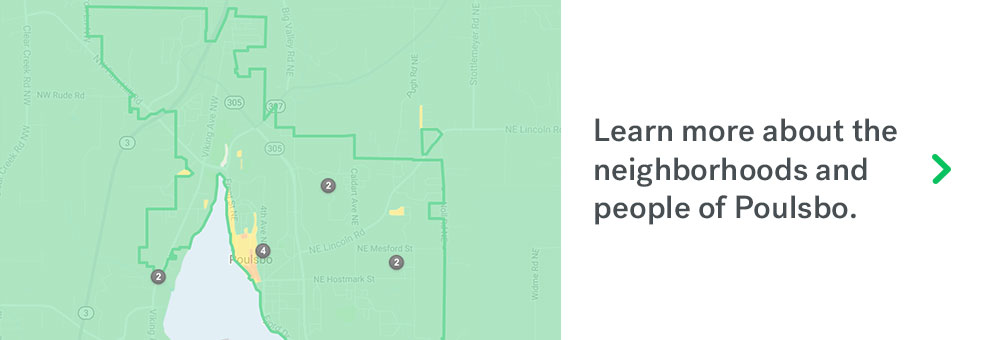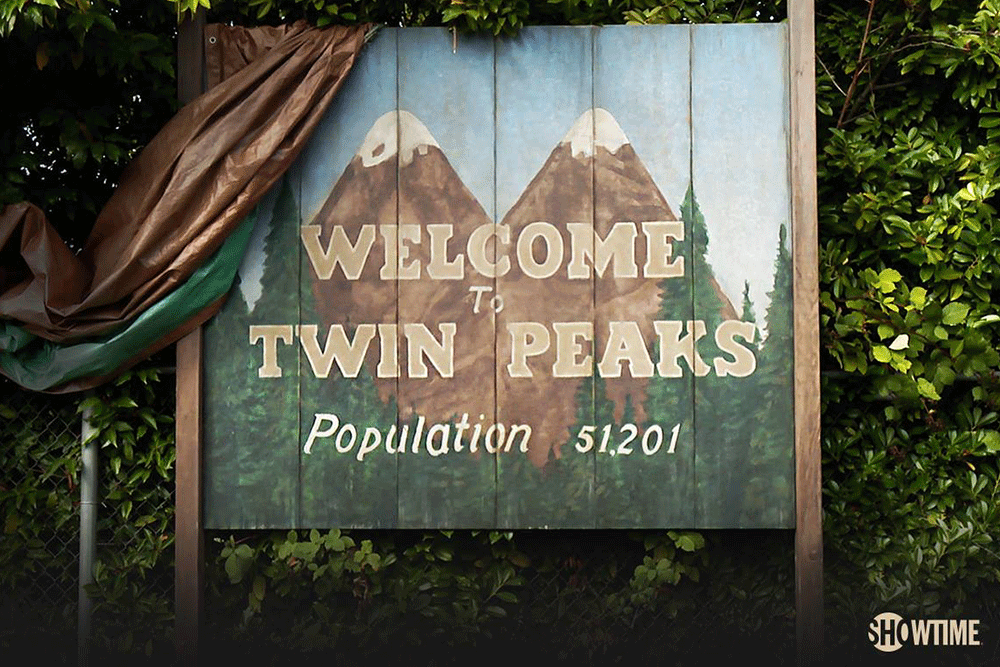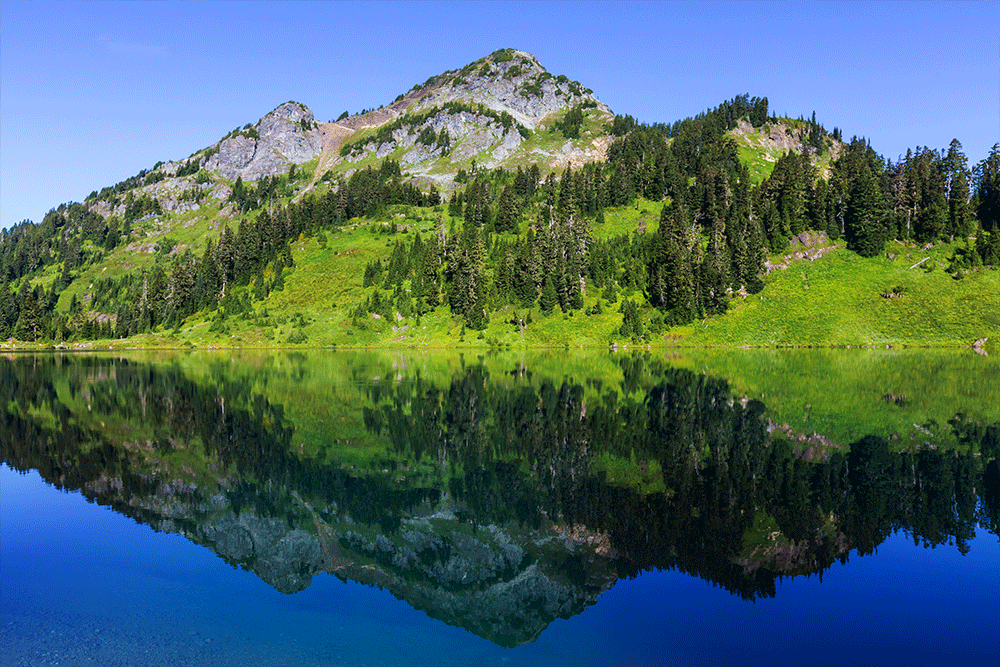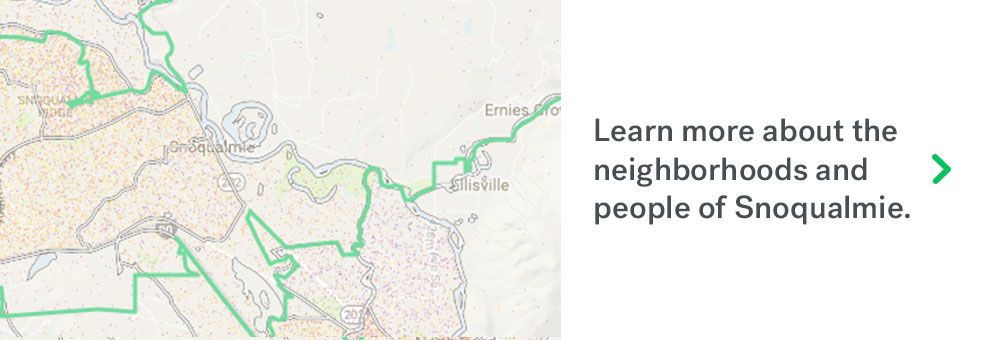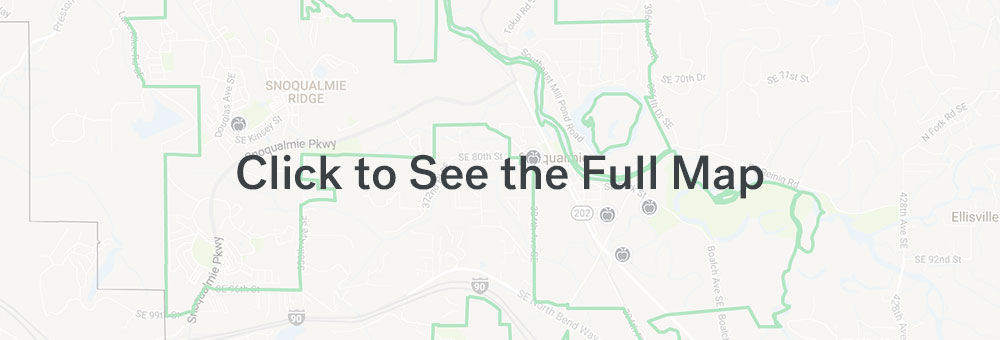When “Twin Peaks” premiered in 1990, the Snoqualmie Valley—an area about 30 miles east of Seattle where parts of the show were shot—was made up of sleepy lumber towns. But now, cities like Snoqualmie, North Bend and Fall City are ready for their close-ups. (Good timing, since the cult classic is wrapping up its well-reviewed return to TV in two days, on September 3rd, 2017.)
Thanks to new planned developments and the region’s manageable commute to big tech companies like Microsoft, Snoqualamie’s population has exploded in recent years. According to government estimate, the area grew by a whopping 774 percent between 1997 and 2016. In turn, housing stock is expanding—2,000 new units are expected by 2020—and the mountain views, courtesy of the nearby Cascades, are as killer as ever. What else makes the area so hot? Read on to find out, then go see for yourself in person.
Nine reasons why Snoqualmie is more than just “Twin Peaks”’ most popular shooting location
-
1. Everywhere you look, there’s a photo opportunity.
“Twin Peaks” may have alerted outsiders to the Snoqualmie Valley’s beauty (check out the breathtaking action shot of the Snoqualmie Falls in the show’s opening credits), but you don’t have to be a fan to want to live there. Between majestic Mount Si, 268-foot waterfalls, miles of lush forests, rivers teeming with fish, and roaming wildlife, you’ll never lack for Instagram posts again.
-
2. You’ll want to know your neighbors.
If you’re a 30- or 40-something, college-educated homeowner, you’re in good company in the Snoqualmie Valley. In Snoqualmie, the median age is 35; in Fall City it’s 39; and in North Bend it’s 42. In all three towns, at least 84 percent of residents are homeowners, while more than half went to college. The populations’ median household incomes range from $88,140 (Snoqualmie) to $98,445 (Fall City) to $103,975 (North Bend). (For comparison’s sake, the median household income in the U.S. was $73,298 in 2014, the last year for which data was available.)
-
3. Your whole life is basically a staycation.
Why get on a plane when there are tons of leisure activities within driving distance? Skiers and snowboarders can hit Snoqualmie Pass, a resort set on 2,000 skiable acres, including daredevil backcountry runs. Hikers can tackle 4,167-foot Mount Si, one of the Northwest’s most popular trails. Wine enthusiasts can vineyard-hop through the nearby Columbia Valley, Washington’s largest wine region. The valley is also known for fishing (trout-packed Snoqualmie River is a popular destination) and golf. There are even beaches about 40 minutes away.
-
4. The area is ideal for families.
The Snoqualmie Valley district is home to a slew of high-rated schools. The local high school, Mount Si, is a particular standout: It boasts a 97percent graduation rate and a spot on U.S. News and World Report‘s Best High Schools 2016 list. Snoqualmie Ridge, a planned community that’s home to some 80 percent of Snoqualmie residents, offers sidewalks, bike trails, a 33-acre park, and a library.
-
5. You’ll probably make money on your house.
Good news for sellers: According to Trulia’s market trends, in all three cities, the median sales price for houses has risen year over year. (Based on home sales from May to August, the median sales price ranged from $508,000 in North Bend to $675,000 in Snoqualmie.) The average price per square foot is also up from the same period last year. If you’re looking to rent versus buy, there are bargains to be found: Year over year, median rent per month is down in Fall City and North Bend, and in Snoqualmie, it’s only up 2 percent.
-
6. Improvements are underway.
The Snoqualmie Valley is investing in its future with multiple projects dedicated to improving infrastructure. In 2015, new hospital opened to serve the area; Mount Si High School is in the midst of a $190 million facelift; Snoqualmie’s downtown historic district recently underwent a major renovation to make it more pedestrian-friendly, and North Bend is kicking off efforts to revitalize its downtown this summer.
-
7. Locals sleep safely and soundly at night.
Unlike the fictional town of Twin Peaks, which lists a population of 51,201 on its welcome sign, Snoqualmie’s population is about 13,190, North Bend’s is 6,739 and Fall City’s is 5,000 (according to 2016 estimates). Given the area’s size, it’s perhaps unsurprising that crime is fairly rare. In all three cities, the most common type of crime in the past year is theft (there’s been 54 counts total), and only 74 crimes were committed overall – none of which were violent.
-
8. Alternate neighborhood alert: Poulsbo
Not sold on the Snoqualmie Valley? Poulsbo, a town located about 50 miles northwest, is worth checking out. (The city has its own Twin Peaks cred: In the series’ pilot, Laura Palmer’s body is found floating in the water outside of the local Kiana Lodge.) Nicknamed Little Norway as a nod to its Scandinavian roots, Poulsbo is known for its pretty waterfront scenery and quaint downtown dotted with shops and art galleries. It’s also a good place for families to call home, thanks to its low crime rate (only one crime so far has been reported in 2017, per Trulia’s crime data), and schools that rank among the top third in Washington, according to Schooldigger.com. More proof that the area is in demand: The median sales price of houses in Poulsbo is up 12 percent year over year (as of August, it’s $384,637) and the average price per square foot has increased 5 percent compared to the same period last year. The median rental price per month, however, is down 9 percent from the same period last year.
